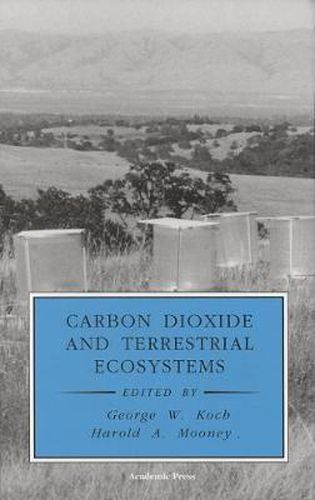Readings Newsletter
Become a Readings Member to make your shopping experience even easier.
Sign in or sign up for free!
You’re not far away from qualifying for FREE standard shipping within Australia
You’ve qualified for FREE standard shipping within Australia
The cart is loading…






The importance of carbon dioxide extends from cellular to global levels of organization and potential ecological deterioration may be the result of increased CO2 in our atmosphere. Recently, the research emphasis shifted from studies of photosynthesis pathways and plant growth to ground-breaking studies of carbon dioxide balances in ecosystems, regions, and even the entire globe.
Carbon Dioxide and Terrestrial Ecosystems addresses these new areas of research. Economically important woody ecosystems are emphasized because they have substantial influence on global carbon dioxide balances. Herbaceous ecosystems (e.g., grasslands, prairies, wetlands) and crop ecosystems are also covered. The interactions among organisms, communities, and ecosystems are modeled, and the book closes with an important synthesis of this growing nexus of research.
Carbon Dioxide and Terrestrial Ecosystems is a compilation of detailed scientific studies that reveal how ecosystems generally, and particular plants specifically, respond to changed levels of carbon dioxide.
$9.00 standard shipping within Australia
FREE standard shipping within Australia for orders over $100.00
Express & International shipping calculated at checkout
The importance of carbon dioxide extends from cellular to global levels of organization and potential ecological deterioration may be the result of increased CO2 in our atmosphere. Recently, the research emphasis shifted from studies of photosynthesis pathways and plant growth to ground-breaking studies of carbon dioxide balances in ecosystems, regions, and even the entire globe.
Carbon Dioxide and Terrestrial Ecosystems addresses these new areas of research. Economically important woody ecosystems are emphasized because they have substantial influence on global carbon dioxide balances. Herbaceous ecosystems (e.g., grasslands, prairies, wetlands) and crop ecosystems are also covered. The interactions among organisms, communities, and ecosystems are modeled, and the book closes with an important synthesis of this growing nexus of research.
Carbon Dioxide and Terrestrial Ecosystems is a compilation of detailed scientific studies that reveal how ecosystems generally, and particular plants specifically, respond to changed levels of carbon dioxide.